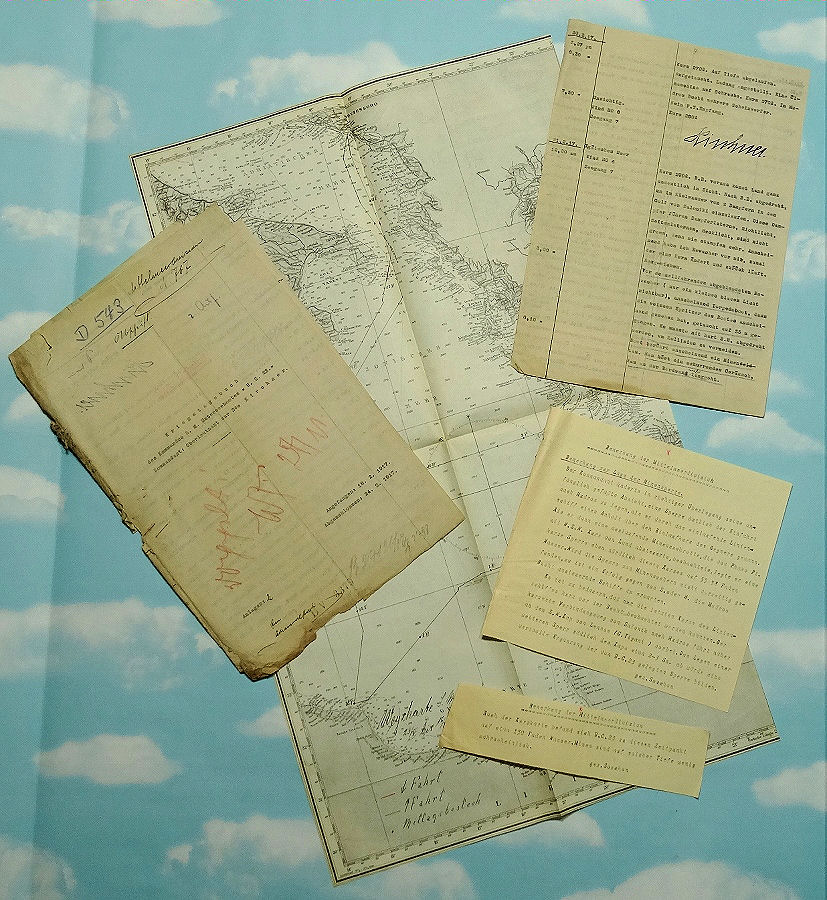Description
This is a combat patrol report for the UC-23 under Oberleutnant zur See Johannes Kirchner’s command. The Kaiserliche Marine operated several U-Boot classes and types. One of its smaller classes was the “UC,” which featured coastal boats that also laid mines in designated areas. The UC-23 was commissioned in July 1916, assigned to the Constantinople Flotilla to operate primarily in the Mediterranean. Her first commander was Oberleutnant zur See Johannes Kirschner. He was an early U-Boot commander who also served on the UC 13 and UC 48 (his final command, which lasted through the war’s end). The UC 23 was responsible for sinking forty-five ships, nineteen under Kirschner’s command (July 1916-1917). [It is also worth mentioning that Kirschner received the 1914 Iron Crosses 1st and 2nd Class during his career].
Today we are offering the UC 23’s interesting and very neatly typed combat patrol report from 18–24 February 1917. The cover sheet displays all the U-Boot’s basic information: its name, the time period, and so on. It also is marked by the various entities who reviewed the document, from Kirschner’s immediate superior to Berlin’s Admiralty.
It is one of the more detailed combat patrol reports that I have encountered. It has a daily report with hourly notations where needed. At the end of each day’s events, Kirschner signed it boldly in black ink. The report features six-to-seven Johannes Kirschner signatures. The daily notations mention weather conditions, conditions on board the UC 23, and sightings. I have not read it in detail, but it mentions sighting a battleship (nationality unidentified) on two different days, and a French battleship. Destroyers and Torpedoboots are also mentioned. The U 73 is mentioned, so it must have been working in the UC 23’s general area. Mines being laid are also mentioned at one point. I did NOT see anything about sinking enemy vessels during this period.
Two notes were typed and added to Kirschner’s report, which I find quite unusual. It was very simple to just pencil in comments and/or remarks, but apparently the originating officer thought it important enough to type out his remarks and add them to Kirschner’s reports. The report’s last page is primarily a recap of observations made by Kirschner and his First Officer, Leutnant zur See Schaefer. The report is typed on thin onionskin-like paper, and the final page is greatly dog-eared and foxed around the edges. Its content is solid but the final page’s condition is NOT equal to the others. The document’s format is quite large. The pages measure X” x X.”
The final piece to the report group is a map that corresponds to the UC 23’s voyage. The map measures X” x X.” It shows the UC 23’s departure from Monte Negro and its return at the voyage’s end. The daily travel is plotted on the map in a most precise manner. Each point was drawn neatly, using a ruler. The points where mines have been laid are also noted. It is fascinating to compare the two documents together. [It was common for U-Boot commanders to prepare maps like these. Too often they became separated from the reports following the war. The maps were popular since they could be framed. Following the war many documents from the offices of the former High Seas Fleet and the Admiralty were packed up and sent to England. [I do not know why this happened, other than curiosity about the U-Boot Service, although some authorities were interested in putting certain U-Boot commanders on trial for War Crimes. This particular report came to us from an English source].
It is a pleasure to bring you a COMPLETE combat patrol report. You will have plenty of research opportunities with it. Enjoy!








